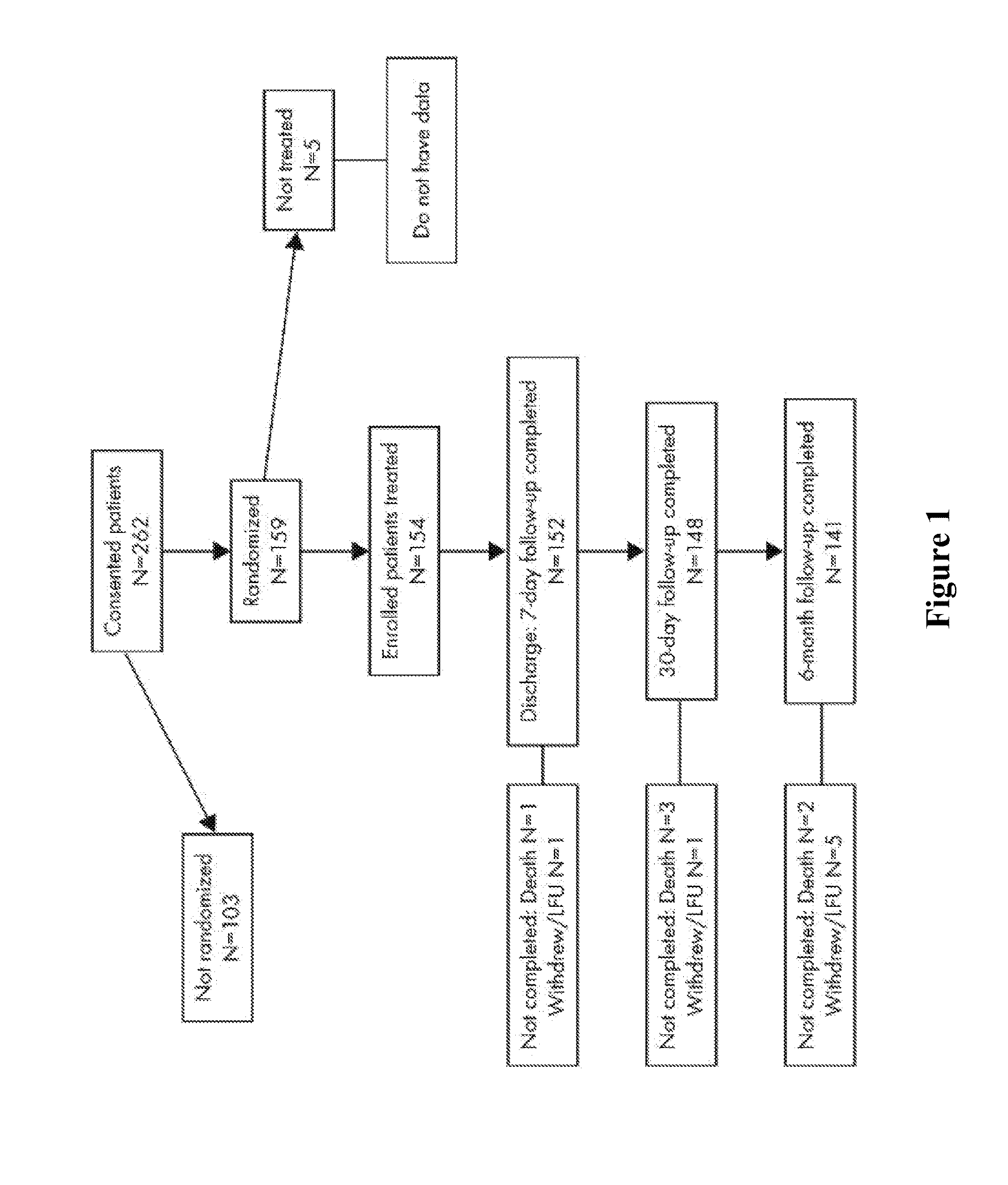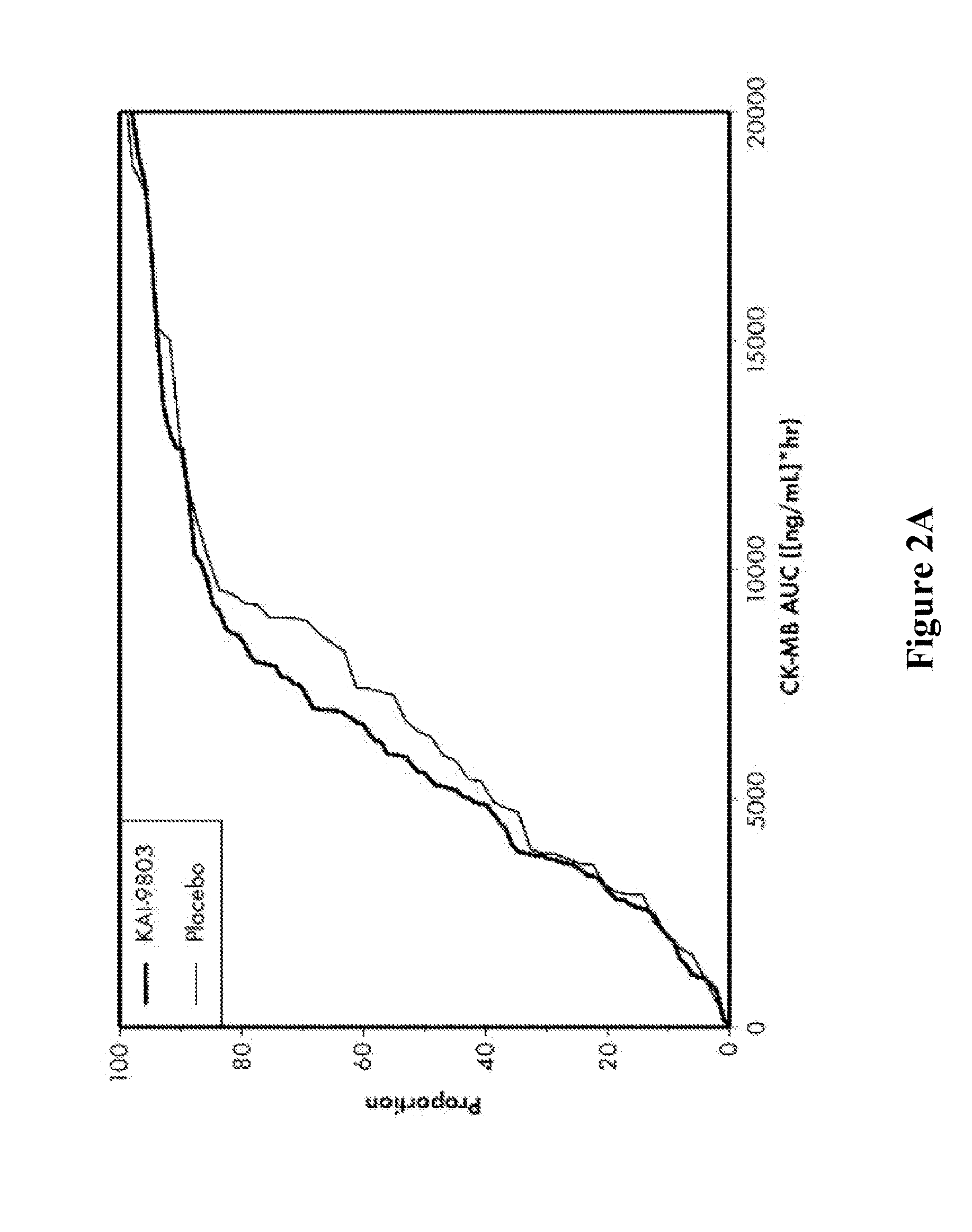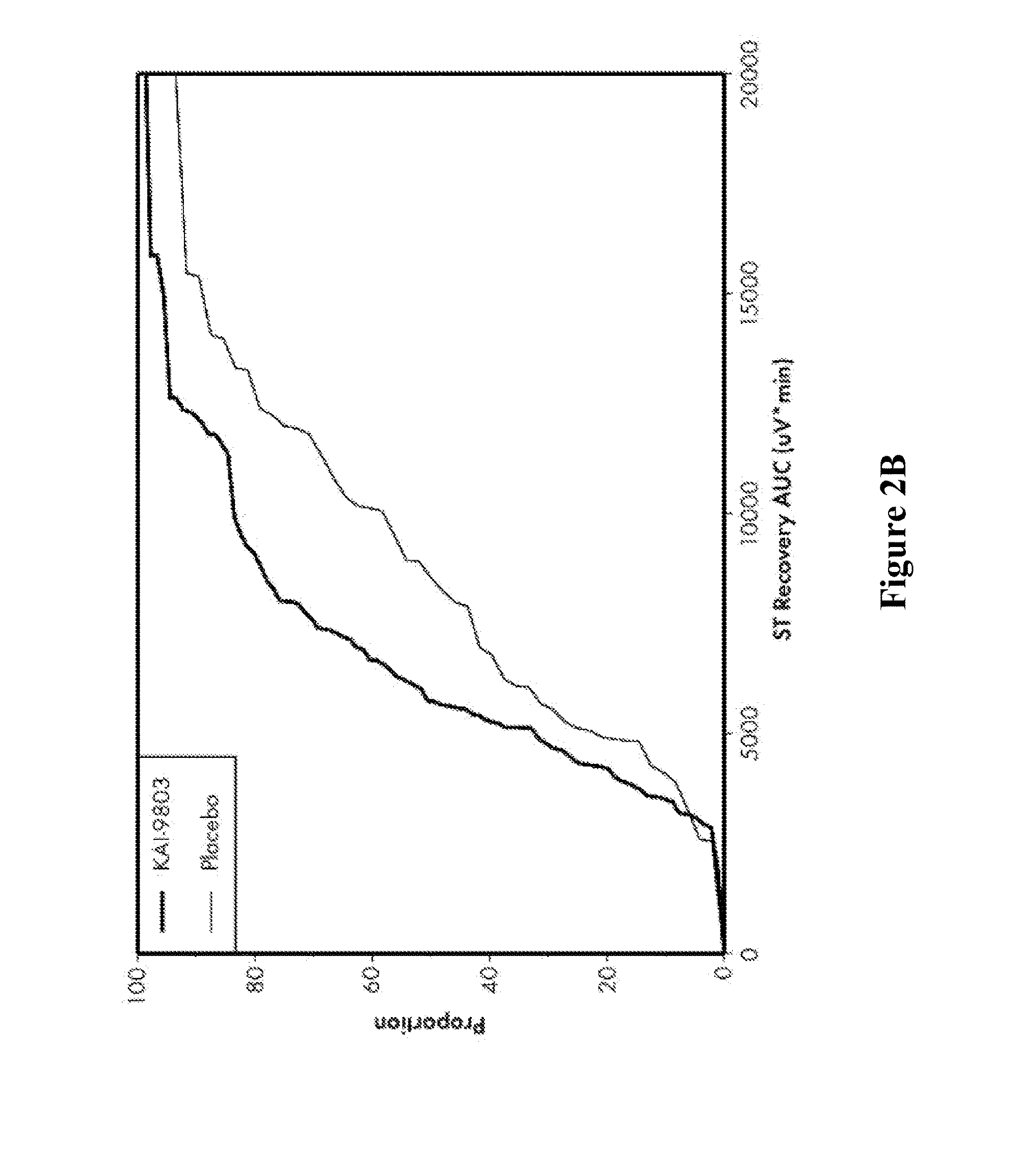Method of treating acute st-elevation myocardial infarction with a delta pkc antagonist
a technology of delta pkc and myocardial infarction, which is applied in the direction of peptide/protein ingredients, enzymology, transferases, etc., can solve the problems of failure to demonstrate efficacy with biomarker end, failure to achieve epicardial reperfusion, and limited efficacy of reperfusion therapies. , to achieve the effect of improving the half life of composition, good effect and low cos
- Summary
- Abstract
- Description
- Claims
- Application Information
AI Technical Summary
Benefits of technology
Problems solved by technology
Method used
Image
Examples
example 1
Exopeptidase Protection: Plasma Stability of Capped Peptides
[0087]Plasma stability of capped peptides was compared. KAI-9706 was modified step-wise at its amino and carboxy termini. Plasma stability as measured by the percent of peptide composition remaining after 15 minutes. The results are provided in Table 3.
TABLE 3Plasma Stability of KAI-9706cargoH—OHAc—OHH—NH2Ac—NH2carrierH—OH1 1 00Ac—OH57ndnd48H—NH260ndnd51Ac—NH292939090% parent remaining at 15 minst1 / 2 in rat plasma = 40-45 mins for longest-lived derivatives
[0088]The data provided above shows that the peptide composition, comprising unmodified cargo and carrier peptides, was the least stable. Moreover, protection of the carrier peptide alone failed to increase the half life of the peptide composition in plasma. Moreover, modification of the cargo peptide with the carrier peptide unmodified had no apparent effect on half-life stability in plasma. However, the addition of protecting groups to the carrier peptide, whether at the...
example 2
Effect of d-Peptides on Plasma Stability
[0089]KAI-9706 was engineered with D-amino acids to determine their impact on peptide composition stability. Unmodified KAI-9706 was compared to a peptide composition with the same amino acid sequence, however the amino acids used were d-enantiomers instead of 1-amino acids. A retro-inverso version and a scrambled version of the peptide composition were also prepared. The data from the experiment is shown in Table 4.
TABLE 4Plasma Stability of KAI-9706cargoAll-LAll-DscrambledR / IcarrierAll-L102All-D8810067R / I100% parent remaining at 15 mins
[0090]Modification of the carrier showed the great propensity in improving the half life of the composition while modification of the cargo showed little effect.
example 3
Capped KAI-9706 Maintains In Vitro Potency
[0091]Capping the carrier peptide portion KAI-9706 (KAI-1455) was shown to increase the plasma half life of the peptide composition. The ability of the capped composition to inhibit ischemic damage in a rat heat model (Langendorff Assay) was evaluated versus the uncapped form. The results are shown in FIG. 11.
PUM
| Property | Measurement | Unit |
|---|---|---|
| temperature | aaaaa | aaaaa |
| size | aaaaa | aaaaa |
| pH | aaaaa | aaaaa |
Abstract
Description
Claims
Application Information
 Login to View More
Login to View More - R&D
- Intellectual Property
- Life Sciences
- Materials
- Tech Scout
- Unparalleled Data Quality
- Higher Quality Content
- 60% Fewer Hallucinations
Browse by: Latest US Patents, China's latest patents, Technical Efficacy Thesaurus, Application Domain, Technology Topic, Popular Technical Reports.
© 2025 PatSnap. All rights reserved.Legal|Privacy policy|Modern Slavery Act Transparency Statement|Sitemap|About US| Contact US: help@patsnap.com



